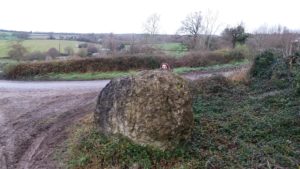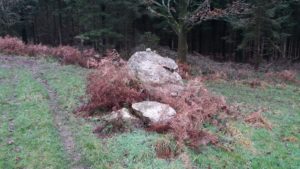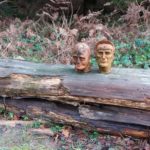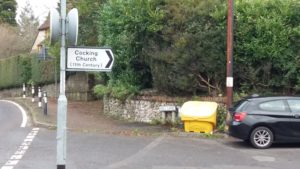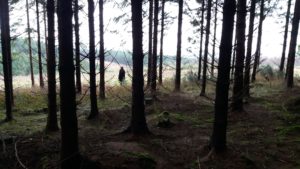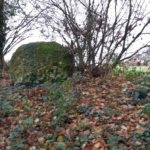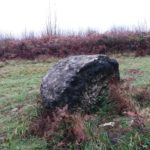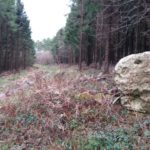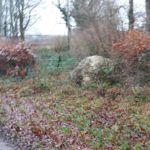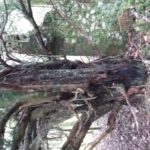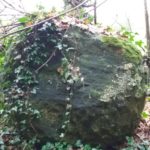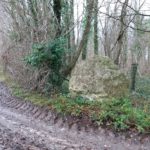There are a set of large balls below Cocking village. They are made of chalk, and were placed there by the land artist Andy Goldsworthy. I’ve been meaning to visit them for some years and had two failed attempts. My first try, with my friend Sophie, was foiled by mud and unreliable directions. Sophie was underwhelmed and announced “I’m not sure who this Andy Goldsworthy fellow is, but I don’t want anything more to do with the man.”
Another attempt in 2017 was stopped by a combination of rain and poor clothing. But at the end of the year I set out with my hiking buddies Katharine and Romi for another try. Better clothed and better prepared, we managed to follow the whole route.
The trail features over a dozen chalk boulders from Duncton Quarry, each about 2 meters in diameter, and placed along a five-mile route. It was expected that the stones would last about two years, but 18 years later they are still there and, indeed, their weathering has been the subject of scientific research. I read online that they might last as long as two centuries. The sculpture was a lovely way to link a trail together, with the added fun of trying to spot the stones. I didn’t keep track of how many we found, knowing that it is unlucky to try counting stones.
The chalk was was not the only artwork we saw on the trail. Unexpected and unsignposted, there were two heads resting on a fallen tree-trunk.
The route took us to Cocking and back. Sadly we arrived a couple of weeks early for the local pub, which was being renovated. It had just been bought by the community, and I am looking forward to visiting it in the future. We settled for buying sweets at the post office, then headed back.
One of the fun thing was trying to find a path through a forest and realising our map no longer matched the reality. We were in a managed forest, and a section of the trees had been cut back.
The trip to look for the stones was a good one, with some lovely scenery, and even a deer at one point. The chalk boulders have settled in to being part of the landscape. We met some locals at one point, who took a photo of the three of us at the last stone. They told us that they’d heard the chalk was left by some artist, but had no idea why.
You can download a PDF of the route.
